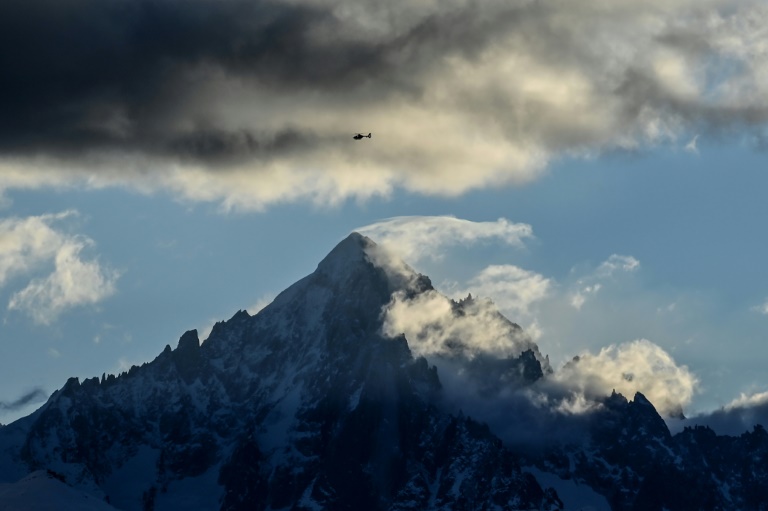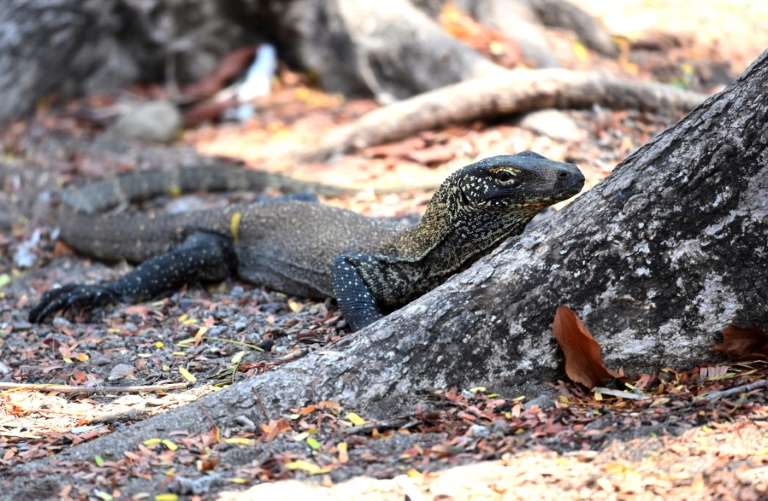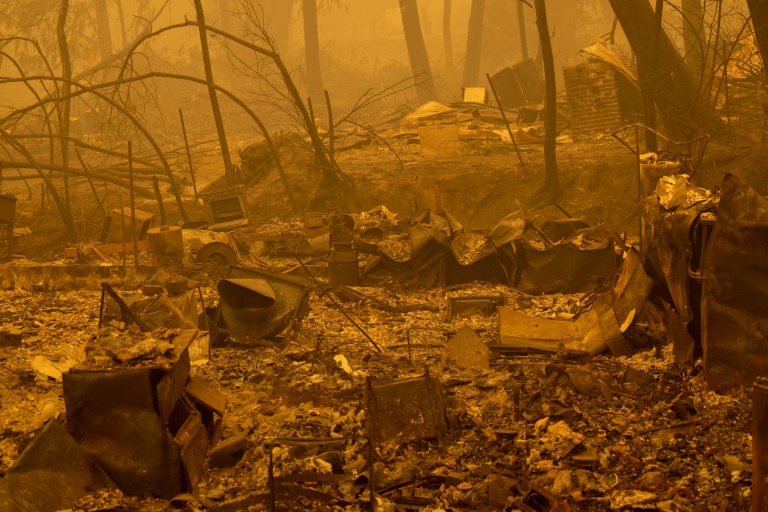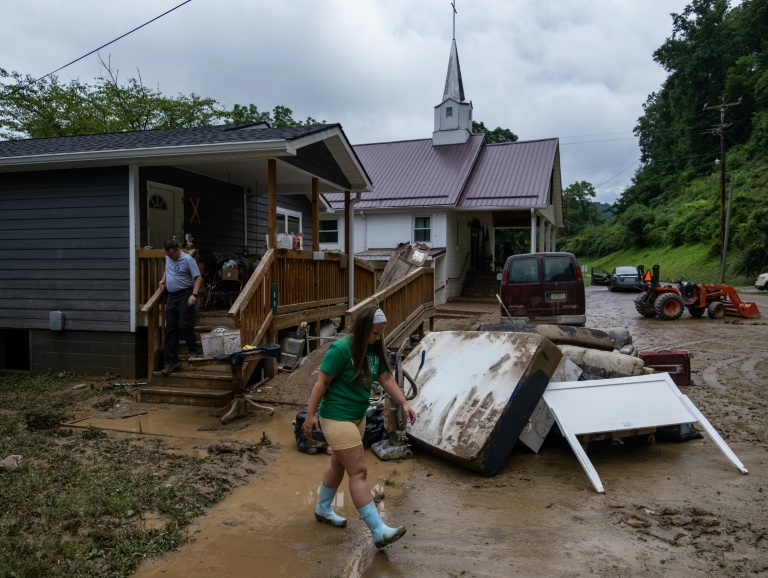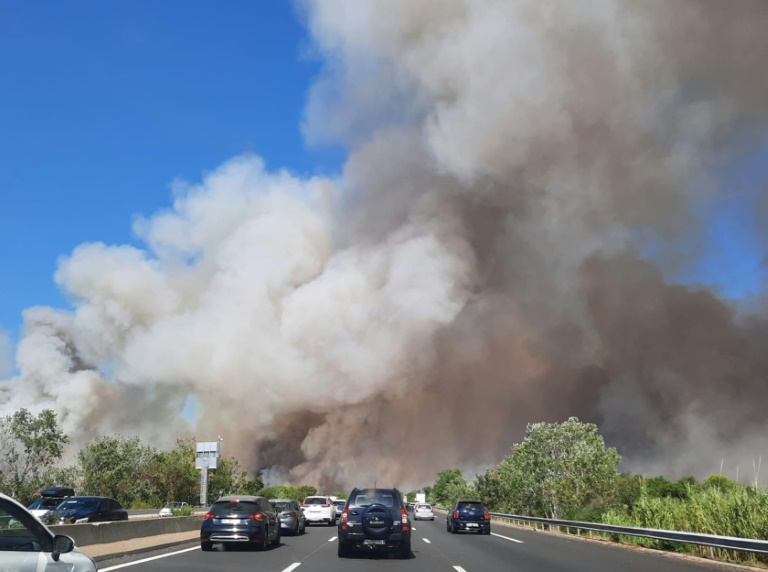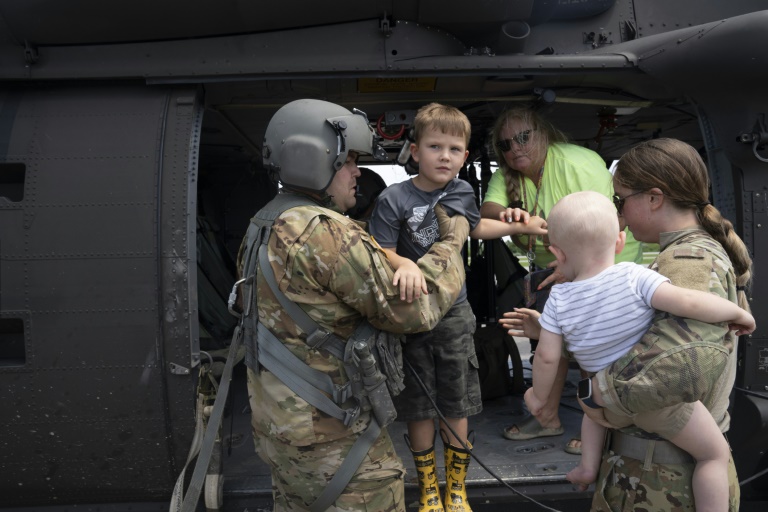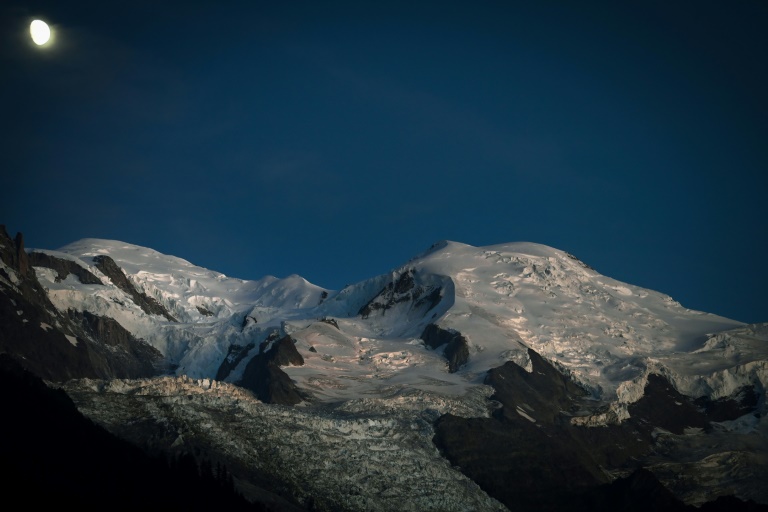Rockfalls, gaping crevices put Mont Blanc out of reach for many
In a year marked by drought and heatwaves, rockfalls and gaping crevices have made access to the top of Mont Blanc even more difficult and perilous — to the great frustration of amateur mountaineers.
Officially, none of the seven routes leading to the summit, at 4,807 metres (15,774 feet), is closed, but access conditions at the end of July have deteriorated to such an extent that only the most experienced climbers are able to make the ascent, experts say.
A lack of snow during the winter has laid bare vast areas of greyish glacier — yellowish where sand dust from the Sahara has accumulated — riven with fractures.
The heat did the rest, causing the melting of the fragile snow bridges that make it possible to cross the crevasses as well as leading to landslides.
In the southeastern French town of Chamonix, at the foot of the “White Giant”, the season is in full swing with thousands of tourists flocking by cable car to the top of the Aiguille du Midi, at 3,842 metres, the closest you can get to the summit of Mont Blanc without hiking or climbing.
– ‘Awful’ conditions –
But in the small cave carved out of the ice which serves as a changing room and a starting point for mountaineers for many mountain races, there are fewer people than ever putting on crampons right now.
Scotsman Evan Warden and his 14-year-old son David said they were shocked to discover the “awful” conditions.
“Everywhere we walked there was just constant rockfall and the crevices constantly open up. (We were) pretty worried,” said David, 14, on his first visit to the Alps.
“MB is too risky… that was our plan, yes but I’ve not seen this much rockfall here in a long time. That’s global warming definitely,” Evan said, adding that the pair had hoped to do the “Trois Monts” (three peaks) route.
Norwegians Monica and Marten Antheun had also been hoping to have a go at the famed peak after three years’ waiting.
They had booked a trip, but it was cancelled.
“I think the guides know the area and the conditions. It’s okay for us, we can do it later”, said Monica.
Guiding firm, Les Compagnies des guides de Chamonix et de Saint-Gervais, announced in mid-July the temporary suspension of ascents to Mont Blanc by the “normal” Gouter route due to rockfalls in the Gouter corridor, also known as “death gully”.
Access remains open only to independent guides.
Recent very high temperatures have destabilised the mountain, says Noe Verite, caretaker of the Cosmiques refuge, located on the Trois Monts route.
“We see the conditions deteriorating day by day,” he said.
– ‘Like fridges’ –
For him, July is usually the peak of the season, but the cancellations have been piling up.
The usual route is affected by large rocks “like fridges” falling, Verite said.
Currently, only between a dozen and 20 skilled mountaineers are able to reach the summit of Mont Blanc each day compared to 100-120 usually, says Olivier Grebert, president of the Compagnie des guides de Chamonix.
Cancelled races are postponed, reimbursed or redirected to other routes and the firm takes the opportunity to do a bit of education with those who, for example, want to climb the summit “for their 40th birthday”.
“This ascent must be part of a mountaineering career,” explains Grebert: “Mont Blanc sometimes has the reputation of being an easy ascent but it’s not the case, this year even more so.”

